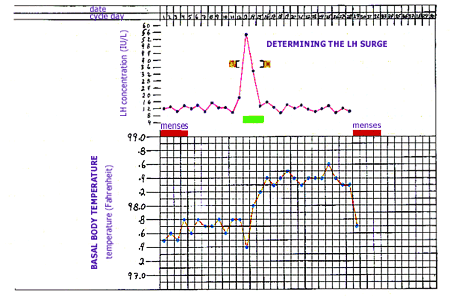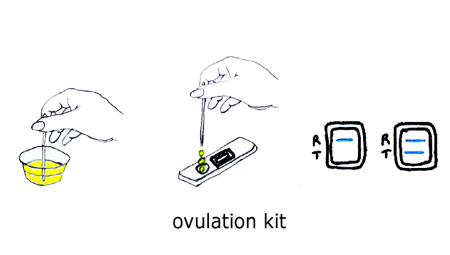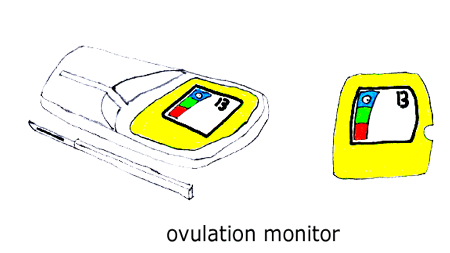| visit: www.infertilitytutorials.com |
|
Determining the LH Surge
Circulating LH concentrations are pulsatile, but generally fluctuate at fairly low levels throughout most of the menstrual cycle. Immediately prior to ovulation, there is a dramatic surge (increase) in circulating LH concentrations. It is this LH surge that (apparently) triggers the egg to undergo its final maturation in preparation for ovulation and fertilization and also prepares the ovary to allow for the release of the egg into the pelvis (ovulation). The LH surge begins about 36 hours (1 1/2 days) prior to ovulation.
Ovulation predictor home kits that rely on detection of elevated LH concentration in the urine have been available for over a decade. These modern commercially available kits are very specific for LH (use monoclonal antibody directed at unique antigenic sites on the LH molecule) yet may vary considerably in terms of sensitivity. Each kit is designed (calibrated) such that a test region within the kit will “turn color” (pink and blue are the most common colors) when the LH concentration exceeds a certain level. Many kits are calibrated to become “positive” (turn color) at an LH concentration of about 40 IU/L (orange squares on graph). Of note, these home kits detect the LH in urine rather than blood so they generally predict that ovulation will occur in about a day (give or take a day) of a positive result. Research correlating the time of ovulation using high quality tests (serial ultrasound exams and blood work every 15-30 minutes) with the time of ovulation as predicted by home LH ovulation predictor kits have conflicting results, with many kits turning positive 1-3 days prior to actual ovulation.
Ovulation monitors are also commercially available. These monitors are also based primarily on the detection of LH concentrations in urine, however, the monitors may additionally determine other hormone concentrations (such as estradiol). Software within the monitor may further be able to store test result information over the course of several menstrual cycles and then attempt to find meaningful patterns that help to more accurately predict the time of ovulation. The monitors currently available appear to suggest to the user that her fertility status is low, high, or peak based on the data that is collected. It is not clear that these monitors have a clinically significant advantage over the (less expensive) home kits. It will be interesting to see how these monitors evolve, in terms of the hormone concentrations that are tracked and the patterns that are discovered.
| |||||||||||||||



